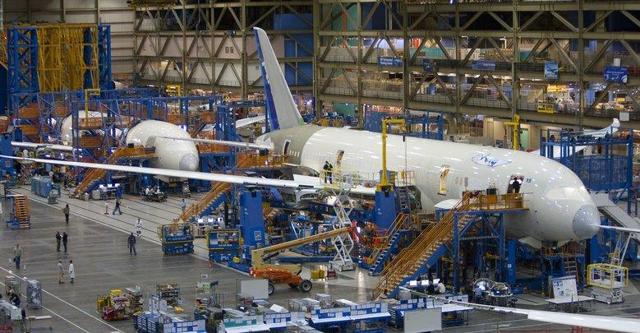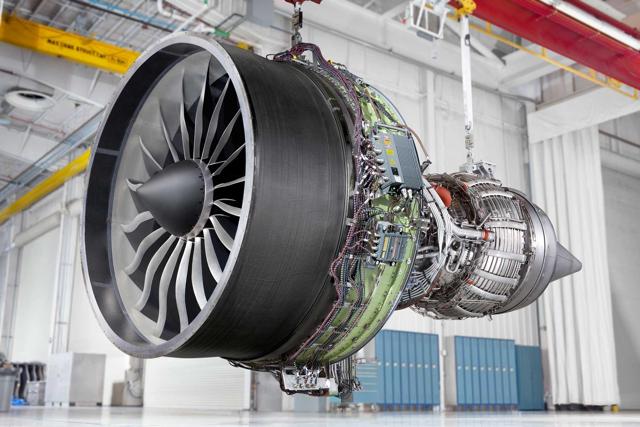The Boeing 787 Nightmares
With the second crash with the Boeing (BA) 737 MAX, Boeing and the FAA have come under scrutiny, and this was further amplified as NY Times reported that the Boeing 787 has been plagued by shoddy production and weak oversight. Having followed the aerospace industry for years, I have witnessed that Boeing has faced challenges in all of its recent aircraft developments. I was working on a piece that looked at some of the challenges Boeing faced, however I found that the problems experienced in various phases of the Boeing 787 program have been so severe and so many that they are worthy of a stand-alone report.
Source: Airline Ratings
Issues before service-entry

Source: Seattle Times
The Boeing 787 currently is Boeing’s wide body cash cow and performance on the program has been impressive, as we noted in an earlier report. However, also the Boeing 787 has been coping with issues in the design and manufacturing, and the development of the aircraft has been all but smooth. In 2007, the maiden flight of the Boeing 787 was delayed due to a shortage of fasteners and incorrect installation, and that would push the first flight back even further in 2009. In 2010, during the flight test program, there was an electrical fire in the main cabin caused by tools (foreign object debris) left in the electrical bay. This fire triggered a temporary grounding of the test aircraft fleet and Boeing performed software and electrical modifications to the Dreamliner in the aftermath of the fire.
A long list of operational problems
After service entry, the problems weren’t over for Boeing as the auxiliary power unit (APU) suffered from rotor bow, the same phenomenon that gave Airbus (OTCPK:EADSF) and United Technologies (UTX) many problems with the geared turbofan. The bigger in-service problems that the Boeing 787 experienced were problems with wiring, fuel leaks and problems with the lithium-ion battery causing battery fires. What exactly resulted in the battery fire is not precisely known, but Boeing designed a casing that should prevent fires and the spreading. The problems with the batteries would eventually lead to the first grounding of an aircraft since the DC-10 was grounded in 1979.
The Boeing 787 has been a program that suffered from multiple problems throughout the various phases of the program and the FAA as well as Boeing have received a lot of criticism due to issues arising after service entry. One could even say that as early as the development of the Boeing 787, the relation between Boeing and the FAA was considering intimate… a bit too intimate at times.
Even today stories of "shoddy production" are chasing the Dreamliner, although it's not known how up-to-date these issues are. Boeing also is facing some challenges with the turbofans as the complexity of the design has resulted in unexpected complications for the General Electric and Rolls Royce turbofans used to power the Dreamliner.
It's said that some airlines such as Qatar Airways have stopped accepting airplanes from the production facility in Charleston due to quality issues, and that indeed seems to be true. After 2014, Qatar Airways has not taken a single delivery from the Charleston factory, but stated it “continues to be a long-term supporter of Boeing and has full confidence in all its aircraft and manufacturing facilities.” Air New Zealand said it has full confidence in the aircraft produced in South Carolina.
Problems with propulsion systems

Source: Engine Lease Finance
In 2012, it was found that the General Electric GEnx-1B turbofans suffered from accelerated corrosion on the midshaft, affecting the durability of the engines. There's also the possibility of icing in the core of the engine at high altitudes close to thunderstorms. In 2012, the FAA requested the grounding of certain aircraft with GE (GE) turbofans due to engine shutdowns, but the issues were already dealt with according to General Electric.
In 2016, following an in-flight engine shutdown in 2014, the FAA ordered revisions to the fan-ice removal procedure for flight crews and an increase in clearance between the fan and the engine fan case. The airworthiness directive followed after General Electric already recommended the fix. In the same year, the turbofan supplier also found that wear on a pinion gear resulted in excessive vibration, causing engine shutdowns. The pinion gear was redesigned and implemented. Even in 2018 there seemed to have been problems with engine software: Due to a software bug, the engines could be commanded to shut down by the computer. General Electric worked on a fix, but Boeing requested a waiver until December 2019 to allow for a timely service entry of the Boeing 787-10. The FAA pushed back on the waiver request, as it should, but the waiver request is telling about Boeing’s practice. Boeing continuously tells that safety is their utmost priority, yet when a software patch needed to be released Boeing requested a waiver to keep a program on schedule. What Boeing says and does clearly are two different things.
Also Rolls Royce had problems with the Trent 1000 turbofans used on the Boeing 787. In 2017, excessive corrosion affected the intermediate pressure turbines of Rolls Royce Trent 1000 Package B/C turbofans. Further monitoring revealed problems with the high pressure turbine requiring a blade redesign and problems with the intermediate pressure compressor. In April 2019, Singapore Airlines (OTCPK:SINGY) was forced to ground two of its Boeing 787-10 aircraft due to premature blade deterioration. The issues with the Rolls Royce Trent 1000 turbofans have left a couple of dozen Dreamliners grounded.
Conclusion
It’s safe to say that Boeing has had big problems with the Boeing 787 in various stages of the development and manufacturing. Even now it seems that the North Charleston plant is under increased surveillance by the FAA. There indeed have been problems with the quality of the work delivered in the North Charleston plant, but how many of the problems with the Boeing 787 have occurred recently is unknown. Problems with shavings and foreign object debris have been known since 2017 and since then the production process has improved significantly.
Boeing is currently getting slammed from all sides, and there are good reasons for that. At the same time, I believe that problems that Boeing faced years ago are rehashed in current media reports, and unless Boeing is indeed facing these problems to this day, some media reports are more focused on creating fear than serving the purpose of supplying readers with current information. Nevertheless, I strongly believe at least some of the issues are recent and the media has an important role in showing things that big corporations such as Boeing don’t want the general public to see in a balanced way. Boeing has a big legal and PR machine that at times is working overtime, even when Boeing is not doing things the right way.
After completing this report a report from Post and Courier indeed seems to be confirming that there still are problems in Boeing’s North Charleston plant.
One thing that holds for the Boeing 787 and associated propulsion technology is that it has been a leap forward. That also brings risks as new methods, materials and technology are brought to the design table. So part, but certainly not all, of the problems faced can be attributed to a steeper learning curve.
One thing that doesn’t rhyme with Boeing’s claim to put safety first is their history of waiver requests. Not just in 2018 did Boeing request a waiver for the Dreamliner. In 2014, Boeing requested waivers for two components that wouldn’t meet airworthiness regulations to keep the first delivery of the Boeing 787-9 on track. I think Boeing is doing extremely well with the Dreamliner, but the Boeing 787 waiver requests to me strongly indicate that while Boeing says safety is their key priority, they take complete contrary steps that are not in support of safety. Boeing is continuously weighing schedule vs. safety. I wouldn’t go as far as saying that Boeing is rolling out unsafe planes on purpose, but they are making a continued risk and probability assessment with system failure on one hand and schedule on the other.
The chance of system failure is never zero, but a company such as Boeing should know better. Regulations are there for a reason, and to a company such as Boeing it should never be the first reaction to request waivers if safety regulations aren’t met. It completely defeats the purpose of regulations. The other side of the story is that companies such as Boeing are under constant pressure from shareholders to keep meeting expectations quarter over quarter and stick to development timelines. At some point if that is a constant pressure, to satisfy shareholders, walking on the edge of a cliff becomes part of the business practice.
Regarding the Boeing 787, I strongly do believe Boeing is on a good financial trajectory as well as improving the quality of manufacturing where needed, and the company is learning important lessons here, lessons that didn’t come at the price of lives in case of the Dreamliner but did cost lives on the Boeing 737 MAX.
If you enjoyed reading this article, don't forget to hit the "Follow" button at the top of this page (below the article title) to receive updates for my upcoming articles.
If you like our regular coverage, please consider joining The Aerospace Forum which gives you more indepth tools to understand the industry, access to over 750+ previously published reports and ways (Live chat with the group and one-on-one conversations) to discuss the aerospace industry.
Disclosure: I am/we are long BA, EADSF, GE. I wrote this article myself, and it expresses my own opinions. I am not receiving compensation for it (other than from Seeking Alpha). I have no business relationship with any company whose stock is mentioned in this article.
via DMT.NEWS, , Khareem Sudlow



